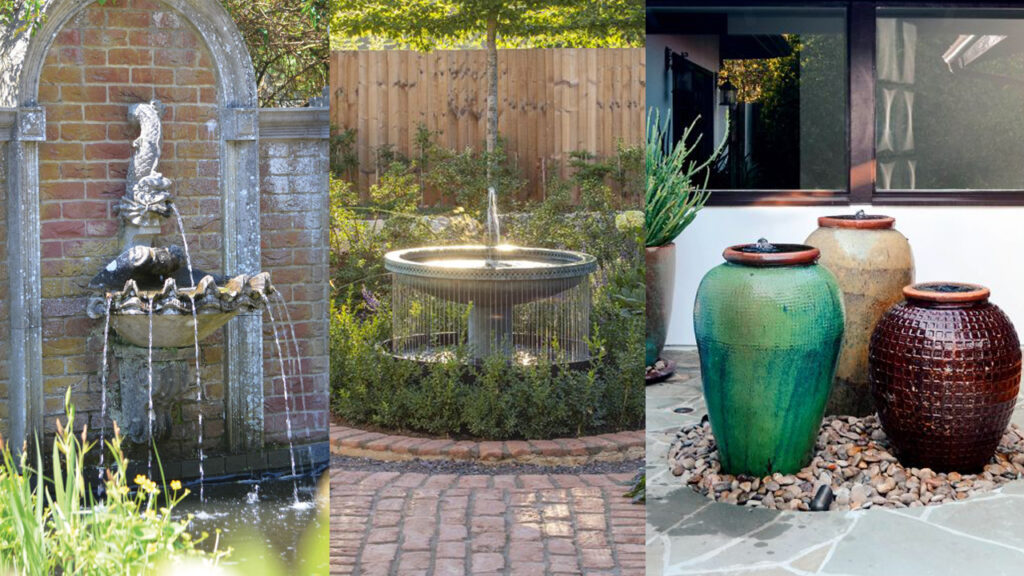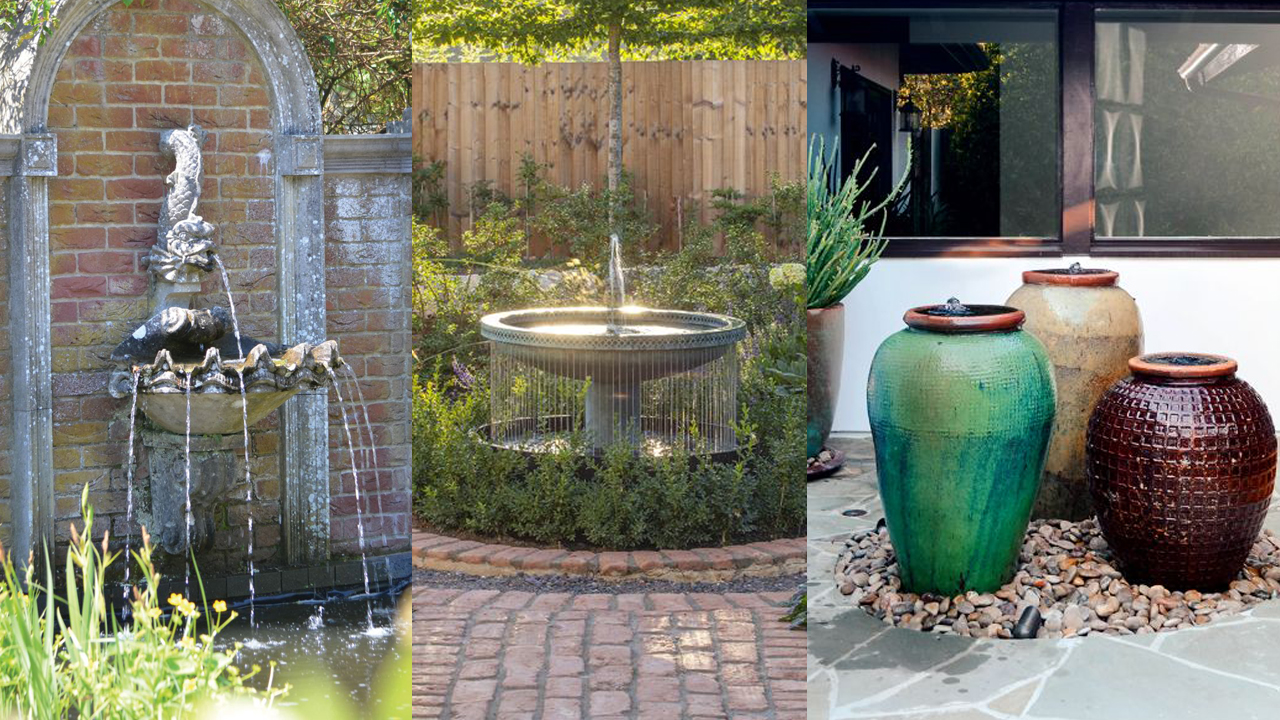
Introduction: The Allure of Front Porch Water Fountains
Imagine stepping onto your front porch and being greeted by the gentle sound of flowing water. A front porch water fountain isn’t just a decorative element; it’s an invitation to tranquility, a statement of style, and a welcoming gesture to guests. In this comprehensive guide, we’ll explore everything you need to know about front porch water fountains, from choosing the right style and material to installation and maintenance. Whether you’re looking to create a serene oasis or simply add a touch of elegance to your home’s exterior, a water fountain can be the perfect solution.
Why Choose a Front Porch Water Fountain?
Before diving into the specifics, let’s consider the numerous benefits of adding a water fountain to your front porch:
- Aesthetic Appeal: Water fountains are visually stunning and can enhance the overall look of your home. They add a touch of sophistication and elegance that other decorations simply can’t match.
- Relaxation and Stress Relief: The sound of flowing water is naturally soothing and can help reduce stress and anxiety. It creates a calming atmosphere that makes your front porch a more enjoyable place to relax.
- Sound Masking: Fountains can help mask unwanted noise from traffic, neighbors, or other external sources, creating a more peaceful environment.
- Air Purification: As water circulates, it can help purify the air by releasing negative ions, which are known to have mood-boosting and health benefits.
- Attracting Wildlife: A water fountain can attract birds and other small wildlife, adding a touch of nature to your front porch.
- Increased Home Value: A well-chosen and maintained water fountain can increase the curb appeal of your home, potentially boosting its value.
Types of Front Porch Water Fountains
Front porch water fountains come in a wide variety of styles, sizes, and materials. Understanding the different types available is crucial for choosing the perfect fountain for your needs and preferences.
Wall Fountains
Wall fountains are designed to be mounted on a wall or other vertical surface. They are a great option for smaller front porches or areas where space is limited. Wall fountains can be made from various materials, including:
- Stone: Offers a natural and rustic look.
- Metal: Provides a sleek and modern aesthetic.
- Resin: A lightweight and durable option that can mimic the look of stone or metal.
Freestanding Fountains
Freestanding fountains are self-contained units that can be placed anywhere on your front porch. They come in a variety of shapes and sizes, from small tabletop fountains to large, multi-tiered structures. Common materials include:
- Concrete: Durable and weather-resistant, perfect for outdoor use.
- Ceramic: Offers a decorative and artistic touch.
- Fiberglass: Lightweight and easy to move, with a variety of finishes available.
Tiered Fountains
Tiered fountains feature multiple levels or basins, with water cascading from one level to the next. They are often more elaborate and can serve as a focal point for your front porch. These fountains can be constructed from materials like:
- Cast Stone: Provides a classic and elegant look.
- Copper: Develops a beautiful patina over time, adding character.
- Stainless Steel: A modern and durable option that resists corrosion.
Pond Fountains
While less common on front porches, pond fountains can be incorporated if you have a small pond or water feature nearby. These fountains typically consist of a pump and nozzle that create a spray or jet of water. Consider these materials for surrounding elements:
- Natural Stone: Blends seamlessly with the environment.
- Gravel: Provides drainage and a natural look.
- Aquatic Plants: Adds life and color to the water feature.
Choosing the Right Material
The material of your front porch water fountain is a crucial factor to consider, as it affects its appearance, durability, and maintenance requirements. Here’s a closer look at some popular materials:
Stone
Stone fountains offer a natural and timeless look that blends well with various architectural styles. They are durable and weather-resistant, but can also be quite heavy. Common types of stone used for fountains include:
- Granite: Extremely durable and resistant to weathering.
- Limestone: Offers a softer, more porous texture.
- Slate: Provides a unique and layered appearance.
- Marble: Luxurious and elegant, but requires more maintenance.
Metal
Metal fountains provide a sleek and modern aesthetic that complements contemporary homes. They are generally lightweight and easy to maintain, but can be susceptible to rust or corrosion if not properly treated. Popular metal options include:
- Copper: Develops a beautiful patina over time, adding character.
- Stainless Steel: Durable and resistant to corrosion.
- Aluminum: Lightweight and rust-resistant, but not as strong as steel.
- Cast Iron: Heavy and durable, but prone to rust if not properly sealed.
Resin
Resin fountains are a cost-effective and versatile option that can mimic the look of stone or metal. They are lightweight and easy to move, but may not be as durable as natural materials. Resin fountains are available in a wide range of styles and finishes, making them a popular choice for budget-conscious homeowners.
Concrete
Concrete fountains are durable and weather-resistant, making them ideal for outdoor use. They can be molded into various shapes and sizes, and can be stained or painted to match your home’s exterior. Concrete fountains are often heavier than resin or metal options, but their durability ensures they will last for years to come.
Size and Placement Considerations
Choosing the right size and placement for your front porch water fountain is essential for creating a balanced and harmonious look. Consider the following factors:
- Porch Size: Select a fountain that is proportional to the size of your front porch. A large fountain can overwhelm a small porch, while a small fountain may get lost on a large porch.
- Traffic Flow: Ensure that the fountain does not obstruct walkways or create a tripping hazard. Place it in a location where it can be easily admired without interfering with traffic flow.
- Sun Exposure: Consider the amount of sunlight your front porch receives. Some materials, such as resin, may fade or degrade over time if exposed to direct sunlight.
- Power Source: Most water fountains require an electrical outlet to power the pump. Ensure that you have a nearby outlet or are willing to run an extension cord. Solar-powered fountains are also an option, but may not be as reliable in cloudy conditions.
- Visibility: Place the fountain in a location where it can be easily seen from the street or sidewalk. This will enhance your home’s curb appeal and create a welcoming atmosphere for guests.
Installation Tips
Installing a front porch water fountain is generally a straightforward process, but it’s important to follow the manufacturer’s instructions carefully. Here are some general tips to keep in mind:
- Read the Instructions: Always read the manufacturer’s instructions before beginning the installation process.
- Prepare the Site: Ensure that the area where you plan to place the fountain is level and stable.
- Assemble the Fountain: Follow the instructions to assemble the fountain components, making sure all connections are secure.
- Connect the Pump: Connect the pump to the fountain’s water source and electrical outlet.
- Fill the Fountain: Fill the fountain with water, making sure the pump is fully submerged.
- Test the Fountain: Turn on the fountain and check for leaks or other issues. Adjust the water flow as needed.
- Conceal the Cord: Use a cord concealer or other method to hide the electrical cord and prevent tripping hazards.
Maintenance and Care
Proper maintenance is essential for keeping your front porch water fountain looking its best and functioning properly. Here are some tips to follow:
- Clean Regularly: Clean the fountain regularly to remove algae, debris, and mineral deposits. Use a soft brush and mild soap to scrub the surfaces.
- Change the Water: Change the water in the fountain every few weeks to prevent algae growth and keep the water clear.
- Check the Pump: Inspect the pump regularly to ensure it is functioning properly. Clean the pump filter as needed to remove debris.
- Protect from Freezing: In cold climates, protect the fountain from freezing temperatures by draining the water and covering the fountain with a tarp or blanket.
- Winter Storage: Consider storing the fountain indoors during the winter months to protect it from damage.
- Treat the Water: Use a fountain water treatment to prevent algae growth and keep the water clear.
Design Ideas and Inspiration
Looking for inspiration for your front porch water fountain design? Here are a few ideas to get you started:
- Zen Garden Fountain: Create a tranquil oasis with a stone fountain surrounded by pebbles, bamboo, and other Zen garden elements.
- Rustic Farmhouse Fountain: Add a touch of country charm with a wooden barrel fountain or a stone fountain with a weathered finish.
- Modern Minimalist Fountain: Opt for a sleek metal fountain with clean lines and a simple design.
- Mediterranean-Inspired Fountain: Create a Mediterranean vibe with a terracotta fountain surrounded by colorful flowers and plants.
- Tropical Paradise Fountain: Transform your front porch into a tropical paradise with a bamboo fountain surrounded by lush greenery.
- Add Lighting: Incorporate LED lights to illuminate the fountain at night, creating a magical and inviting atmosphere.
- Incorporate Plants: Surround the fountain with plants that thrive in moist environments, such as ferns, mosses, and water lilies.
Addressing Common Issues
Even with proper maintenance, you may encounter some common issues with your front porch water fountain. Here are some troubleshooting tips:
- Algae Growth: Algae growth is a common problem in water fountains. To prevent algae growth, clean the fountain regularly, change the water frequently, and use a fountain water treatment.
- Pump Failure: If the pump stops working, check the power source, clean the pump filter, and make sure the pump is fully submerged in water. If the pump still doesn’t work, it may need to be replaced.
- Leaks: Check for leaks around the fountain’s connections and seals. Tighten any loose connections and replace damaged seals.
- Mineral Deposits: Mineral deposits can build up on the fountain’s surfaces over time. To remove mineral deposits, use a mild acid solution, such as vinegar or lemon juice.
- Noise: If the fountain is making excessive noise, check the pump for debris or damage. Also, make sure the fountain is placed on a level surface to prevent vibrations.
Purchasing Considerations
Before making a purchase, consider the following factors:
- Budget: Determine how much you’re willing to spend on a front porch water fountain. Prices can range from a few hundred dollars to several thousand dollars, depending on the size, material, and features.
- Warranty: Look for a fountain with a warranty that covers defects in materials and workmanship.
- Reviews: Read online reviews to get feedback from other customers about the fountain’s quality and performance.
- Shipping: Consider the shipping costs and delivery time when purchasing a fountain online.
- Return Policy: Make sure the retailer has a reasonable return policy in case you’re not satisfied with the fountain.
Conclusion: Creating Your Tranquil Oasis
A front porch water fountain is more than just a decorative element; it’s an investment in your well-being and the aesthetic appeal of your home. By choosing the right style, material, and size, and by following proper installation and maintenance practices, you can create a tranquil oasis that you and your guests will enjoy for years to come. So, go ahead and transform your entryway with the soothing sounds and visual beauty of a front porch water fountain. Embrace the serenity and let the gentle flow of water welcome you home.

